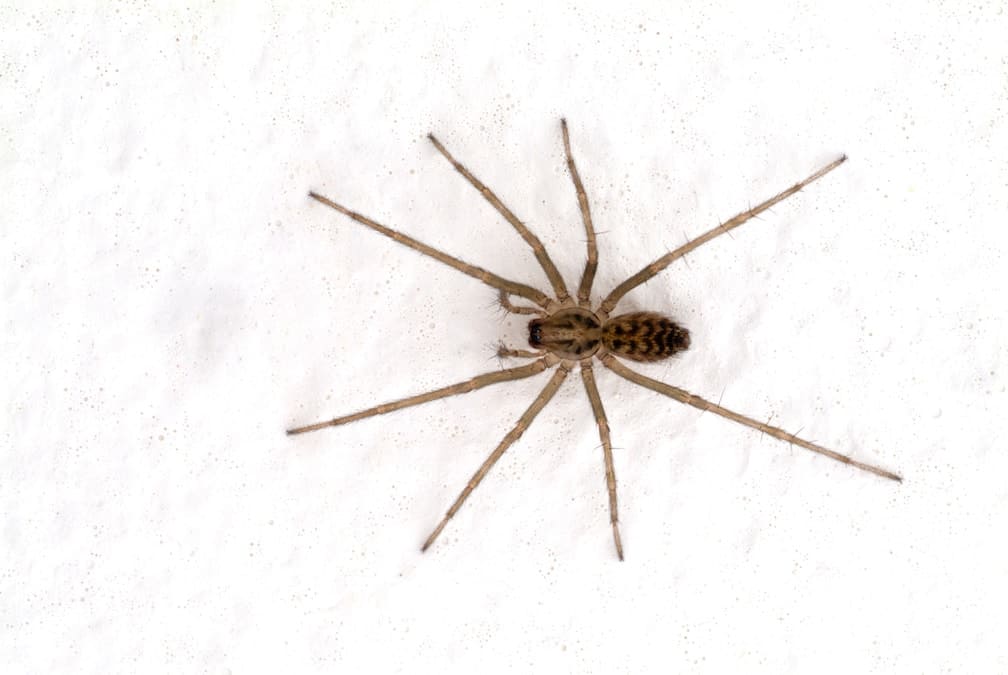
House spiders are most frequently found in human dwelling places. House spiders are natural predators of many other pests, including houseflies and mosquitoes. House spiders weave large, intricate webs but can be eradicated by our pest control experts. Common names include Wolf Spiders, Cellar Spiders, & Jumping Spiders. Scientific names include Achaearanea tepidariorum, Lycosa, Pholcus phalangioides, Salticidae.
| Pest Identification | |
|---|---|
| Recognition | Size: 3/8 in. Color: Tan or light brown with darker markings on the abdomen. Body Structure: Spiders are considered to be arachnids, which means that all species share most of the same characteristics: two body segments, eight legs, usually eight eyes, and fangs that are connected to poison glands. Some species like the wolf spider can grow quite large (up to an inch or more in length) and others species like the cellar spider are smaller (1/3 to ¼ of an inch in length). Characteristics: Male adults deposit eggs, approximately 400 at a time, into a silken sac. In a lifetime, which averages about 1 year, the female will lay around 4,000 eggs. The gestation period for eggs is one week. Offspring go through a series of “instars,” or transformations where the spiderlings molt and develop before reaching maturity; male offspring go through six instars, while females undergo seven. After hatching, house spiders use “ballooning,” a process by which spiders release silk from their spinnerets into the air thereby allowing the wind to carry them to another locale, to leave the nest. Commonly Active: Spring / Summer / Fall |
| Biology | The life cycle begins when either the male places sperm on a web where it is then transferred to the female, or when the male uses their pedipalps to transfer their sperm directly to the female. Depending on the species the female may lay her eggs and then die, while others will carry the eggs with her, or keep them in a silk retreat until the eggs hatch. Once the eggs hatch, the hatchlings look identical to the adults, but smaller. The hatchlings will go through several molts before they become adults. Spiders overwinter inside of places like houses, garages, sheds, hollow logs, or underneath rocks as either adults or eggs. When the weather warms in the spring the spiders emerge to feed and mate, or the eggs hatch and develop into adults. |
| Habits | Most spiders end up inside of homes accidentally as they search for food. Once inside they seek out dark and secluded areas to hide and build their webs in. Most spider species can be found hiding in the corners of doorways, in closets, in clothing and shoes, underneath of furniture, and in basements attics. Some species, like the house spider and cellar spider, build webs hoping that prey will happen into it; while others, like the jumping spider and the wolf spider, hunt and chase down their prey instead of building webs. Spiders use their fangs in order to inject venom into the prey to kill or paralyze it. In most species the venom is generally not strong enough to cause a problem in the majority of people. When they are ready to feed they inject a digestive enzyme into the prey and use their strong jaws to “soften” the prey and begin the digestive process. |
| Prevention | Sanitation is the best preventative measure for controlling house spiders as well as “cobwebs.” Likewise, caulking cracks around your home will help prevent house spiders from invading. On that note, house spiders are natural predators of many other pests, including houseflies and mosquitoes. If your home is overrun with spiders, however, please contact a pest control professional to properly identify the species of spider. Do-it-yourself, store-bought chemical pesticides often are ineffective and can harm the health of your family and pets if administered incorrectly. Find out more about spider control options for your household. |

